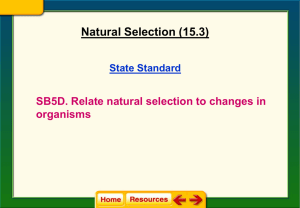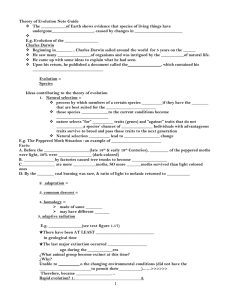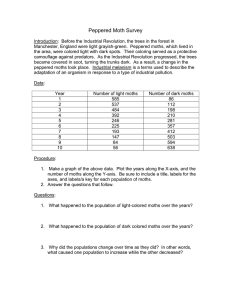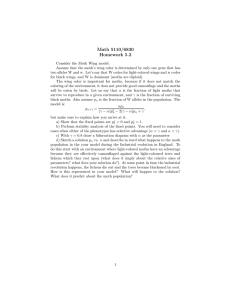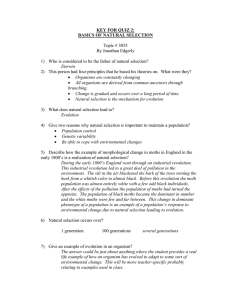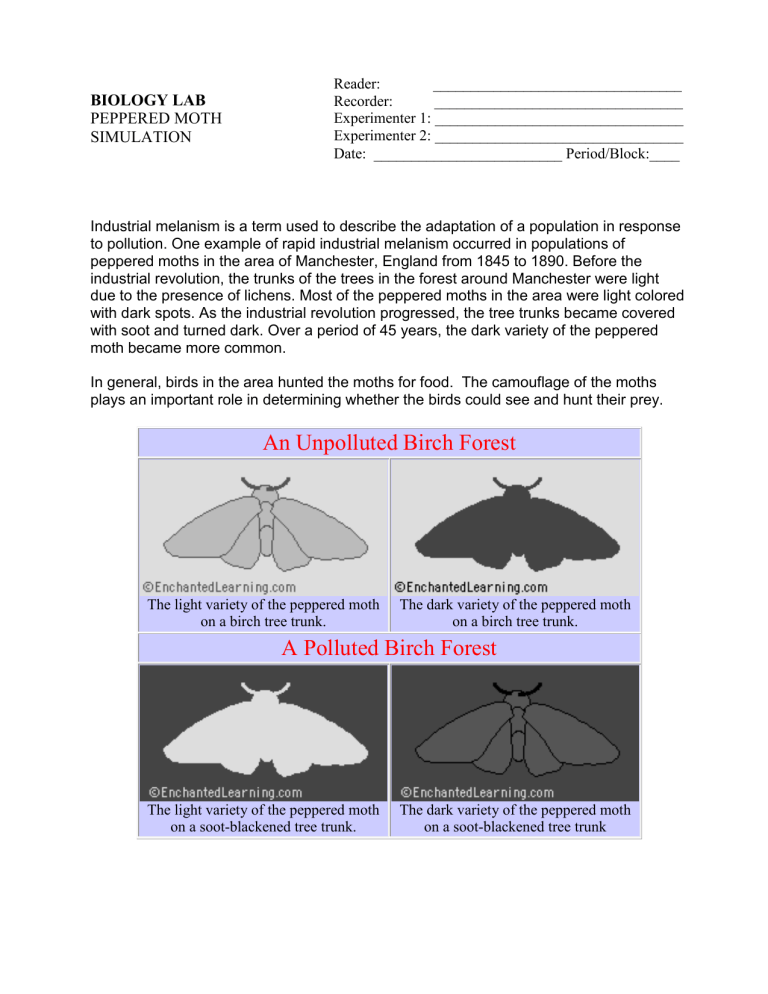
BIOLOGY LAB PEPPERED MOTH SIMULATION Reader: _________________________________ Recorder: _________________________________ Experimenter 1: _________________________________ Experimenter 2: _________________________________ Date: _________________________ Period/Block:____ Industrial melanism is a term used to describe the adaptation of a population in response to pollution. One example of rapid industrial melanism occurred in populations of peppered moths in the area of Manchester, England from 1845 to 1890. Before the industrial revolution, the trunks of the trees in the forest around Manchester were light due to the presence of lichens. Most of the peppered moths in the area were light colored with dark spots. As the industrial revolution progressed, the tree trunks became covered with soot and turned dark. Over a period of 45 years, the dark variety of the peppered moth became more common. In general, birds in the area hunted the moths for food. The camouflage of the moths plays an important role in determining whether the birds could see and hunt their prey. An Unpolluted Birch Forest The light variety of the peppered moth on a birch tree trunk. The dark variety of the peppered moth on a birch tree trunk. A Polluted Birch Forest The light variety of the peppered moth on a soot-blackened tree trunk. The dark variety of the peppered moth on a soot-blackened tree trunk Materials: Represents: White paper Newspaper 30 Small white paper cutouts 30 Small newspaper cutouts Clock Unpolluted birch trees Polluted birch trees Light-colored peppered moths Dark-colored peppered moths Procedure 1. Choose one person in the group to be the “bird predator”. 2. Place a sheet of white paper on the table and have one person spread 30 white circles and 30 newspaper cutouts over the surface while the “predator” isn't looking. 3. The "predator" will then pick up as many of the circles as he can in 15 seconds. 4. Record your results in the data table under Trial 1. 5. Repeat steps 2 – 3 again. Record your results in the data table under Trial 2. 6. Place a sheet of newspaper on the table and have one person spread 30 white cutouts and 30 newspaper cutouts over the surface while the “predator” isn't looking. 7. The "predator" will then pick up as many of the circles as he can in 15 seconds. 8. Record your results in the data table under Trial 3. 9. Repeat steps 6 – 7 again. Record your results in the data table under Trial 4. Results Starting Population Trial Background 1 white 2 white 3 newspaper 4 newspaper Dark moths White moths Number Picked up White moths Dark moths Conclusions 1.What did the experiment show about how prey are selected by predators? ______________________________________________________________________ ______________________________________________________________________ ______________________________________________________________________ ______________________________________________________________________ 2. Which colored moths are best adapted to an unpolluted environment? Use your results to support your answer. ______________________________________________________________________ ______________________________________________________________________ ______________________________________________________________________ ______________________________________________________________________ 3. Which colored moths are best adapted to a polluted environment? Use your results to support your answer. ______________________________________________________________________ ______________________________________________________________________ ______________________________________________________________________ ______________________________________________________________________ 4. a. What would you expect the next generation of moths to look like after Trial 1? Why do you think this? b. What would you expect the next generation of moths to look like after Trial 3? Why do you think this? ______________________________________________________________________ ______________________________________________________________________ ______________________________________________________________________ ______________________________________________________________________ ______________________________________________________________________ ______________________________________________________________________ ______________________________________________________________________ ______________________________________________________________________ ______________________________________________________________________ 5. a. What is natural selection? b. How you’re your experiment show that natural selection occurred in the moth populations? Use your results to support your answer. ______________________________________________________________________ ______________________________________________________________________ ______________________________________________________________________ ______________________________________________________________________ ______________________________________________________________________ ______________________________________________________________________ ______________________________________________________________________ ______________________________________________________________________ ______________________________________________________________________ 6. Examine the table and construct a graph. a. Plot the years of the study on the X-axis and the number of moths captured on the Y axis. b. You should have 2 differently colored lines on your graph - one for light moths, and one for dark moths. c. Make a key that explains which colored line represents light moths and which colored line represents dark moths. Year # of Light Moths Captured # of Dark Moths Captured 2 537 112 3 484 198 4 392 210 5 246 281 6 225 337 7 193 412 8 147 503 9 84 550 10 56 599 Key for Graph: 7. Explain in your own words what BOTH LINES on the graph show. _____________________________________________________________________________ _____________________________________________________________________________ _____________________________________________________________________________ _____________________________________________________________________________ _____________________________________________________________________________ _____________________________________________________________________________
